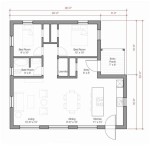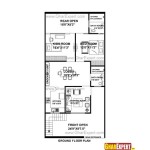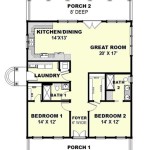Basic Building Plans for Homes
Every building project, regardless of size or complexity, necessitates detailed planning and organization to ensure a successful outcome. Creating a set of building plans is a crucial step in this process, especially when it comes to constructing a home.
Building plans provide a comprehensive blueprint for the entire construction process, outlining the dimensions, materials, and structural components of the home. They serve as a guide for contractors, architects, and engineers to carry out the construction according to the specified design.
Essential Elements of Building Plans
Building plans typically encompass the following key elements:
- Site Plan: This plan outlines the location of the home on the property, including its proximity to property lines, streets, and other structures.
- Floor Plans: Floor plans provide a detailed layout of each level of the home, showing the arrangement of rooms, hallways, stairs, and exterior features (e.g., doors, windows).
- Elevations: Elevations are drawings that depict the exterior appearance of the home from different angles (e.g., front, back, and sides). They show the height, roofline, and architectural features of the structure.
- Sections: Sections are vertical cut-away drawings that reveal the interior structure of the home, including the placement of walls, floors, ceilings, and other elements.
- Foundation Plan: This plan illustrates the type and dimensions of the foundation that will support the home, including the footing, walls, and slab.
- Roof Plan: The roof plan shows the type and pitch of the roof, as well as the location of any chimneys, skylights, or dormers.
Importance of Building Plans
Having a set of building plans offers numerous advantages:
- Clear Communication: Plans facilitate effective communication between the architect, contractor, and other professionals involved in the construction process, ensuring a shared understanding of the project.
- Cost Control: Detailed plans help estimate the project's materials, labor, and construction costs accurately.
- Legal Compliance: Building plans must comply with local building codes and regulations to ensure the safety and structural integrity of the home.
- Permitting: Plans are typically required for obtaining building permits, as they provide evidence of a well-defined and code-compliant design.
- Future Renovations: Plans serve as a valuable reference for future renovations or modifications to the home.
Professional Building Plans vs. DIY Plans
While it may be tempting to create your own building plans, it is generally advisable to commission a professional architect to develop them. Architects have the necessary training, experience, and knowledge of building codes to ensure the plans are accurate, comprehensive, and compliant.
However, if you have exceptional drafting skills and a thorough understanding of building principles, you can consider using DIY plans. However, it is crucial to consult with a qualified professional to review your plans for safety and code compliance.
Conclusion
Building plans are an indispensable element in the construction of a home. They provide a clear roadmap for the entire process, ensuring the project is completed as per the intended design, within budget, and in accordance with building regulations. Whether you choose professional or DIY plans, having a comprehensive set of plans is essential for a successful and satisfying building experience.

Simple House Plans Blog Homeplans Com

Simple House Plans Blog Homeplans Com

Small House Plans Studio One Bedroom 1

Simple 3 Room House Plan S 4 Nethouseplans

Blender For Noobs 10 How To Create A Simple Floorplan In

Create Professional 2d And 3d Floor Plans

Simple Basic 1 Bedroom House Plans Under 1200 Sq Ft

Create Professional 2d And 3d Floor Plans

Simple House Floor Plans 3 Bedroom 1 Story With Basement Home Design

Simple Home Plans And Designs Homes Floor Plain Decoration Marilyn S Way








